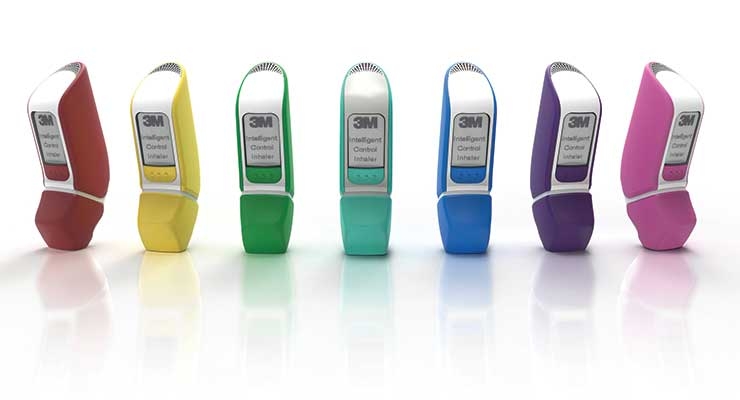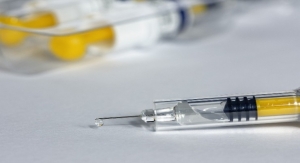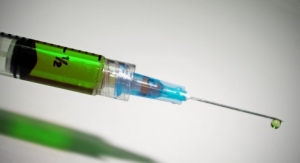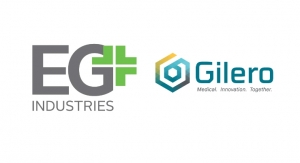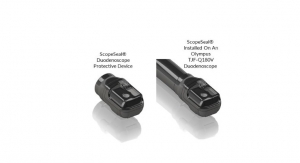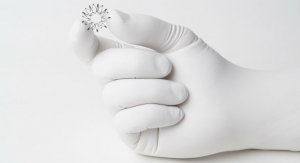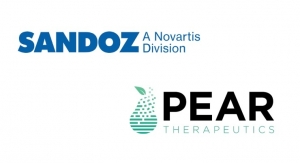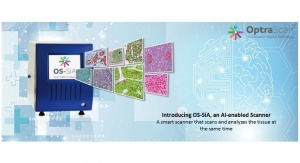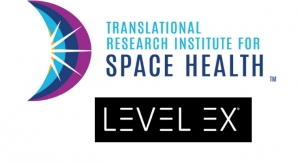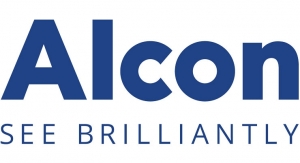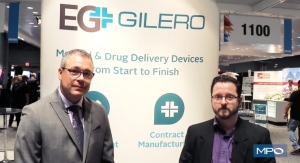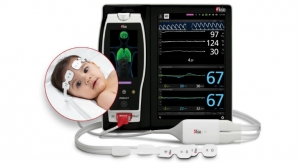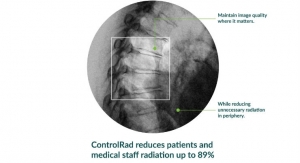Sam Brusco, Associate Editor11.04.19
The drug delivery and combination products market is technically made up of several different markets, the most obvious being medical devices and pharmaceuticals, as both make up a drug-device combination product. But the complexity extends beyond even that because each mode of drug delivery makes up its own market. Two common forms of device-administered drugs that come to mind, for example, are through injection or infusion systems. Even these have sub-sections: syringes (prefilled or refillable) or autoinjectors, and infusion pumps or systems respectively within each market.
There’s also transdermal delivery, usually in the form of a medicated adhesive placed on the skin to deliver a specific dose of medication through the skin into the bloodstream. The most obvious example is the nicotine patch, which releases nicotine in controlled doses to help with smoking cessation. Microneedle patches have emerged more recently. For example, Georgia State scientists have undertaken research to develop a biodegradable patch to deliver a more effective influenza vaccine. According to market research firm Global Market insights Inc. (GMI), Hisamitsu Pharmaceutical, Mylan, UCB, Novartis, GlaxoSmithKline, Boehringer Ingelheim, and Johnson & Johnson are particularly active players in this market.
Nanomedicine and nano delivery systems are an emerging method for targeted drug delivery, and have found success for cancer treatment. Nanotechnology for drug delivery employs particles engineered in such a way that they are attracted to diseased cells, allowing direct treatment of those cells. For example, MIT scientists have demonstrated increased levels of drug delivery to tumors with two types of nanoparticles. The first locates the cancer tumor and the second, which carries the therapeutic drugs, hones in on a signal generated by the first.
In mid-October, researchers from Flinders University and collaborators in Japan discovered a concept to fabricate “nanomeshes” as an antibiotic drug delivery system. The antibiotics Colistin and Vancomycin were embedded using electrospinning in a polycaprolactone (a biocompatible polymer) mesh also imbued with gold nanoparticles. These particles caused the antibiotic to migrate to the mesh’s center during the electrospinning process, prolonging its release. The dosage is actually smaller than an oral dose of antibiotics, but the researchers claim the concentration of drugs delivered to the infection site can still be higher.
Taking a stab at the overall trends in this diverse set of markets—according to GMI, the increasing prevalence of chronic and fatal diseases such as cancer and renal disorders coupled with the rising requirements of controlled drug release are the major factors driving innovation in the drug delivery and combination product markets. Moreover, companies are aiming their focus toward development of patient-centric design in terms of convenience and dosing accuracy.
Sustained release of a drug fulfills the convenience portion of patient-centric design. Long-acting drugs increase medication adherence because patients don’t have to remember to take a daily pill or be forced to return to a clinic for a weekly or monthly injection. Patients simply don’t want to do these things, which heavily impacts how effective the therapy is.
For example, this past January Massachusetts-based biotech company Lyndra Therapeutics released clinical results regarding delivering a steady, weeklong supply of Alzheimer’s medication in one capsule. The technology looks like a pill capsule. As it dissolves in the stomach, it deploys a plastic, asterisk-shaped drug delivery vehicle. While in the stomach, the asterisk releases drug molecules on a deliberate schedule and disassembles to safely travel the GI tract once the dosage term is complete. And last July, Lyndra Therapeutics received a $13 million dollar grant to develop an oral contraceptive that delivers continuous, multiple weeks’ dosages of estrogen and progestin, the same drugs used in daily combined oral contraceptives.
Medication implant technology can also accomplish longer-lasting, localized drug delivery with accurate concentrations. In addition, according to the American Academy of Ophthalmology, it can prompt fewer side effects than any other avenue of administration. There are a number of complex drug delivery implants that will fall into hybrid categories, but they are broadly classified into passive and active implants.
Passive drug delivery implants provide long-term release without needing replenishment. They usually appear as thin, flexible rods and are effective to deliver highly potent drugs like hormones. One notable example is the Implanon (etonogestrel) birth control implant, which is invisible and prevents pregnancy for up to four years.
“Most of these are composed of durable polymers like silicones or ethylene vinyl acetate,” explained James Arps, Ph.D., director of pharma services at ProMed Pharma LLC, a Minneapolis, Minn.-based contract manufacturer of polymer-based drug releasing molded dosage forms and combination device components.
Passive drug delivery implants are also beginning to find use in ophthalmic applications. Last January, ophthalmic medical technology company Glaukos Corporation released 12-month interim trial data confirming its iDose Travoprost intraocular implant continued to provide sustained reduction in intraocular pressure (IOP) to treat glaucoma. The 1.8 x 0.5 mm titanium implant filled with a special formulation of the IOP-lowering medication is inserted into the eye during a micro-invasive procedure. It continuously elutes therapeutic levels of the medications from within the eye for extended periods of time, and can be removed and replaced in a similar, subsequent procedure.
Allergan’s Bimatoprost SR implant, currently in clinical trials to lower glaucoma-related IOP (as well as ocular hypertension) is also sustained release, but the implant is biodegradable. The implant is placed in the eye using a prefilled, single-use applicator. It slowly releases the drug as the copolymer matrix degrades and is designed to lower IOP for at least four months. The FDA accepted Allergan’s new drug application for Bimatoprost SR this past July, and according to the company, will take action on the application by the end of the first half of 2020.
“The preferred approach to using these devices is a low-effort one: implant it, have it release the drug, then it will slowly dissolve away so you never have to worry about taking it out,” said Dr. Arps. “And if you want a new one implanted after a year or two, that can be done. Unfortunately, the number of resorbable polymers on the market has been limited, and these polymers don’t always have the best properties for the application.”
“We’re working with a couple of companies with new polymer technologies that are much more effective for sustained release,” said Dr. Arps. “These polymers maintain mechanical integrity over a longer period of time and slowly dissolve away like a bar of soap while the drug is released. For example, we have a public strategic partnership with DSM Biomedical, who has developed a polymer called polyesteramide (PEA) that has some novel resorption properties.”
This technical and business development partnership initiated in January will combine ProMed’s micromolding and extrusion expertise in conjunction with DSM’s biomedical polyurethanes, polyurethaneureas, and bioerodible acid-based PEAs to develop novel sustained release drug implants and combination devices. Both companies state they have experience working with both established and early-stage medical device and pharmaceutical companies on developing material formulations, manufacturing processes, and platforms for controlled drug release.
Another general trend affecting the market is managed care organizations’ cost containment pressures, combined with patient preferences for comfort and convenience. These are driving the treatment setting’s migration from healthcare facilities to the home, shifting chronic and even some acute care injections administered by a doctor or nurse to self-administration by the patient, a family member, or another untrained caregiver.
“There are growing numbers of non-clinician device users self-administering injectable medications at home,” noted Ted Mosler, CEO of Gilero, a Morrisville, N.C.-based single-source partner for design, development, and manufacturing in the medical and drug delivery markets. “These trends call for drug delivery devices and combination products to be intuitive, easy to use, and safe to operate for individuals without medical training.”
Pre-filled syringes and other injection systems intended for laypeople use must then be specifically configured to facilitate consumer use. Self-administration of medication is convenient, but factors like dosage management and needle stick injuries can make it challenging. Injectable products currently offered in vials could potentially be replaced with user-friendly self-administration devices that promote increased compliance and improvement in dose accuracy. Drug injection device designs, as a result, are increasingly being based on the results of human engineering inputs and patient preference research.
“This is when human factors becomes an even more important step in the development process,” said Mosler. “We have seen an increase in customers inquiring about human factors services like user research, formative studies, and summative studies. Our in-house human factors group has been increasingly busy with studies for prefilled syringes, needle safety devices, and other drug delivery products.”
Global medical device firm Becton, Dickinson and Company (BD) is particularly active in the self-injection systems market. The company’s Physioject disposable autoinjector for biotech 1 mL prefilled syringes features one-button activation of subcutaneous injections and automatic needle protection to ensure safety and ease-of-use. The Vystra disposable pen injector supports therapies requiring frequent, low-volume injections or variable dosing—insulin therapies, for example. Libertas is a wearable, hands-free autoinjector that subcutaneously delivers high-volume and/or highly viscous biotech drugs. The Intevia 1mL two-step disposable autoinjector, which was released in late October, combines an autoinjector and prefillable syringe in one integrated system and was designed especially to deliver highly viscous drugs.
While the self-administration trend has freed patients from visits to the clinic, it also means clinicians have less opportunities to monitor whether patients are taking their drugs on schedule and in the correct dosage. To encourage and support adherence, there is a compelling case for adding connectivity to drug delivery devices.
Connected consumer devices have been around for a while, letting consumers control anything from a home security system to lighting to their sprinkler system by remote control or connected smart device like a tablet or smartphone. The benefits of the ability to pass information to or from a drug delivery device opens a variety of possibilities—dose reminders being the most apparent, but also sensors that monitor the patient’s condition for side effects or help to assess the effects of regimen changes.
“Connectivity was a highly visible topic this year and will continue trending into 2020,” said Bill Welch, chief technology officer of Phillips-Medisize, a Molex company. Phillips-Medisize is a Hudson, Wis.-based global outsource provider of design and manufacturing services serving the drug delivery, medical device, and primary pharmaceutical packaging markets.
“While some biopharma companies have moved ahead with incorporating connectivity into drug delivery products, others are still formulating plans or taking a ‘wait and see’ approach,” he continued. “This hesitation is generally driven by the fear of added device cost, when the focus should be on benefits of adherence like greater potential for improved outcomes and more prescriptions filled.”
There are three main strategies to implement connectivity in a drug delivery device, according to U.K.-based technology and design consultancy firm Springboard. The first is an add-on, usually to an existing design. The second is upgrading an existing device, integrating the connectivity feature but not altering the device’s core functionality or use case. Finally, there is built-in connectivity, which can change core functionality and use case.
The Pharma/Medtech Convergence
Collaboration between medical device and pharmaceutical companies is a major trend influencing growth in both industries. Before these partnerships proliferated, formulators would develop a product, then the drug delivery device teams would need to figure out a method to deliver it. Pharma companies now work with medtech companies much earlier in the development phase—the formulation and device teams begin working together much sooner in the program to ensure a more user-friendly experience.
Rapid expansion in the biologic drug market is also responsible for necessary early collaboration between pharma and device companies. For example, protein-based therapeutics like monoclonal antibodies for cancer treatment require novel methods of drug administration. These are usually infused or injected, which is less desirable for the patient—usability in only the regulatory sense isn’t enough anymore. To stay competitive, devices must now be preferred by end-users over alternatives.
“The nature of biologics creates a need to accommodate upwards of hundreds of thousands of combination products per year,” said Welch. “There’s a real opportunity for platform device owners because custom device production at these high volumes is rare. The device platform evolution has resulted in many ‘me too’ options such a mechanical AI, so there is a need to differentiate at a competitive cost in a crowded market. Less mature areas like wearable on-body injectors present more room for innovation since that space is still developing.”
Capitalizing on this developing market, in late October Phillips-Medisize announced an agreement with a leading biotech company to manufacture a wearable, electronic-enabled combination product. The product delivers a post-phase III development-stage drug subcutaneously using a disposable technology. The hockey puck-sized wearable combination product is replaced every two days and can either be adhered to the body with an adhesive patch or worn near the infusion site.
The company will provide final assembly, testing, and quality control for the electronic combination product—specifically, handling the prefilled drug cartridge that fits inside the device. According to Phillips-Medisize, there is also future potential to bring the device onto a connected health platform. This could be done by embedding low-cost connectivity, making it possible to capture and communicate data between the patient and provider for adherence monitoring.
Biologics aren’t the only pharmaceutical innovations impacting drug delivery device design, however.
“More unique drug formulations are being developed and we are seeing a rise in unique devices used to access and deliver these drugs,” added Mosler. “Customers working on chemotherapy drug delivery, inhaled medications, and ophthalmic solutions have asked us to design and develop entire medical devices around a specific drug.”
Inhalation drug delivery covers various devices: pressurized metered dose inhalers, breath-activated inhalers, nebulizers, and emerging innovative delivery systems. Patients depend on these devices to control chronic ailments like asthma or COPD or to treat acute respiratory attacks and infectious diseases. Many of these devices haven’t changed much in decades, but a combination of human-centric design and new sensor, analytics, and data transmission technologies has made inhalation devices more consistent and easier to use.
For example, 3M Drug Delivery Systems’ Intelligent Inhaler, launched in 2016, was engineered to deliver accurate doses while displaying on-screen instructions for use and feedback to the patient and healthcare provider via an app. A combination of breath actuation and proprietary technology controls inspiratory flow rate to minimize error, resulting in higher drug delivery consistency. The dose is registered when the patient correctly inhales medication—rather than on device actuation—for greater accuracy of information for the patient and cost-savings for healthcare providers. The inhaler’s data management platform records inspiration profiles as well, which helps monitor disease progression and further support informed treatment decisions.
One downside of pharmaceutical innovation, unfortunately, is certain classes of drugs with higher potencies carry an increased risk of addiction. Technologies to mitigate the risk of addiction are another area where device manufacturers can commit to patient safety.
“As drugs become more potent and we learn more about the risks of addiction, there is an even greater need for increased safety,” said Mosler. “Innovative device solutions can play a huge role in ensuring successful drug delivery while keeping patients and caregivers safe.”
The FDA established its Office of Combination Products (OCP) in 2002, responding to a provision of the Medical Device User Fee and Modernization Act of 2002 (MDUMFA). The law gave OCP broad responsibilities to cover combination products’ regulatory lifecycle. The FDA OCP is a focal point for combination product issues and develops guidance, regulations, and standard operating procedures to govern them.
“This office pulls in people from both the pharma and medical device regulatory groups,” explained Dr. Arps. “Because of that convergence, pharma has recruited quality personnel associated with the medical device industry. It is important to have this perspective because the pharma industry hasn’t previously had to deal with medical device regulatory constraints like design master files.”
“The medical device side has to engage higher levels of pharma requirements like data integrity,” Dr. Arps continued. “When testing combination products, how data is managed, maintained, and protected for both development and the commercial manufacture is crucial. FDA is also paying more attention to how we manage and approve suppliers to ensure components going into drug-device combination products are high-quality and appropriately controlled.”
Business approaches also vary greatly between pharmaceutical and medical device companies. Medtech companies building a delivery vehicle must be mindful that time to market may be substantially lengthened when seeking to collaborate.
“Based on my experience in drug delivery devices, pharma views devices as a means to an end, with the end being the drug,” said Lloyd Fishman, president of River Vale, N.J.-based medical device consulting firm High Peaks Partners. “Therefore, pharma will invest substantial dollars to evaluate all options before moving ahead with a particular drug delivery product. This requires the medical device companies to be patient in understanding how pharma works. Devices that might normally take two years to market for a Class II product will take five years or more when combined with a drug.”
According to GMI, companies like Novartis, AstraZeneca, GeneScience Pharmaceuticals, and Shire have significantly invested in various startups involved in development of novel drug delivery systems. For instance, last March Novartis began a collaboration with scientists from Harvard’s Wyss Institute for Biologically Inspired Engineering and the Dana-Farber Cancer institute to develop next-generation injectable and implantable biomaterials for delivery of immunotherapies to cancer patients.
The licensed biomaterial systems will attempt to overcome obstacles like limited duration and lack of targeting to specific cancer cells that impede traditional cancer vaccines. The first-generation therapy uses a porous scaffold material made of the polymer used in biodegradable sutures. This is infused with inactivated antigens from the patient’s tumor cells and immunostimulatory molecules that attract the immune system’s dendritic cells to the immuno-material site, activating them to stimulate a response. After the activation, the dendritic cells travel to nearby lymph nodes to provoke anti-tumor responses throughout the body.
At the time of the announcement, the systems hadn’t been proven in human clinical trials. However, they show great promise as engineered microenvironments to “educate” the immune system about cancer and initiate immune responses against tumors over a sustained period.
There’s also transdermal delivery, usually in the form of a medicated adhesive placed on the skin to deliver a specific dose of medication through the skin into the bloodstream. The most obvious example is the nicotine patch, which releases nicotine in controlled doses to help with smoking cessation. Microneedle patches have emerged more recently. For example, Georgia State scientists have undertaken research to develop a biodegradable patch to deliver a more effective influenza vaccine. According to market research firm Global Market insights Inc. (GMI), Hisamitsu Pharmaceutical, Mylan, UCB, Novartis, GlaxoSmithKline, Boehringer Ingelheim, and Johnson & Johnson are particularly active players in this market.
Nanomedicine and nano delivery systems are an emerging method for targeted drug delivery, and have found success for cancer treatment. Nanotechnology for drug delivery employs particles engineered in such a way that they are attracted to diseased cells, allowing direct treatment of those cells. For example, MIT scientists have demonstrated increased levels of drug delivery to tumors with two types of nanoparticles. The first locates the cancer tumor and the second, which carries the therapeutic drugs, hones in on a signal generated by the first.
In mid-October, researchers from Flinders University and collaborators in Japan discovered a concept to fabricate “nanomeshes” as an antibiotic drug delivery system. The antibiotics Colistin and Vancomycin were embedded using electrospinning in a polycaprolactone (a biocompatible polymer) mesh also imbued with gold nanoparticles. These particles caused the antibiotic to migrate to the mesh’s center during the electrospinning process, prolonging its release. The dosage is actually smaller than an oral dose of antibiotics, but the researchers claim the concentration of drugs delivered to the infection site can still be higher.
Taking a stab at the overall trends in this diverse set of markets—according to GMI, the increasing prevalence of chronic and fatal diseases such as cancer and renal disorders coupled with the rising requirements of controlled drug release are the major factors driving innovation in the drug delivery and combination product markets. Moreover, companies are aiming their focus toward development of patient-centric design in terms of convenience and dosing accuracy.
Sustained release of a drug fulfills the convenience portion of patient-centric design. Long-acting drugs increase medication adherence because patients don’t have to remember to take a daily pill or be forced to return to a clinic for a weekly or monthly injection. Patients simply don’t want to do these things, which heavily impacts how effective the therapy is.
For example, this past January Massachusetts-based biotech company Lyndra Therapeutics released clinical results regarding delivering a steady, weeklong supply of Alzheimer’s medication in one capsule. The technology looks like a pill capsule. As it dissolves in the stomach, it deploys a plastic, asterisk-shaped drug delivery vehicle. While in the stomach, the asterisk releases drug molecules on a deliberate schedule and disassembles to safely travel the GI tract once the dosage term is complete. And last July, Lyndra Therapeutics received a $13 million dollar grant to develop an oral contraceptive that delivers continuous, multiple weeks’ dosages of estrogen and progestin, the same drugs used in daily combined oral contraceptives.
Medication implant technology can also accomplish longer-lasting, localized drug delivery with accurate concentrations. In addition, according to the American Academy of Ophthalmology, it can prompt fewer side effects than any other avenue of administration. There are a number of complex drug delivery implants that will fall into hybrid categories, but they are broadly classified into passive and active implants.
Passive drug delivery implants provide long-term release without needing replenishment. They usually appear as thin, flexible rods and are effective to deliver highly potent drugs like hormones. One notable example is the Implanon (etonogestrel) birth control implant, which is invisible and prevents pregnancy for up to four years.
“Most of these are composed of durable polymers like silicones or ethylene vinyl acetate,” explained James Arps, Ph.D., director of pharma services at ProMed Pharma LLC, a Minneapolis, Minn.-based contract manufacturer of polymer-based drug releasing molded dosage forms and combination device components.
Passive drug delivery implants are also beginning to find use in ophthalmic applications. Last January, ophthalmic medical technology company Glaukos Corporation released 12-month interim trial data confirming its iDose Travoprost intraocular implant continued to provide sustained reduction in intraocular pressure (IOP) to treat glaucoma. The 1.8 x 0.5 mm titanium implant filled with a special formulation of the IOP-lowering medication is inserted into the eye during a micro-invasive procedure. It continuously elutes therapeutic levels of the medications from within the eye for extended periods of time, and can be removed and replaced in a similar, subsequent procedure.
Allergan’s Bimatoprost SR implant, currently in clinical trials to lower glaucoma-related IOP (as well as ocular hypertension) is also sustained release, but the implant is biodegradable. The implant is placed in the eye using a prefilled, single-use applicator. It slowly releases the drug as the copolymer matrix degrades and is designed to lower IOP for at least four months. The FDA accepted Allergan’s new drug application for Bimatoprost SR this past July, and according to the company, will take action on the application by the end of the first half of 2020.
“The preferred approach to using these devices is a low-effort one: implant it, have it release the drug, then it will slowly dissolve away so you never have to worry about taking it out,” said Dr. Arps. “And if you want a new one implanted after a year or two, that can be done. Unfortunately, the number of resorbable polymers on the market has been limited, and these polymers don’t always have the best properties for the application.”
“We’re working with a couple of companies with new polymer technologies that are much more effective for sustained release,” said Dr. Arps. “These polymers maintain mechanical integrity over a longer period of time and slowly dissolve away like a bar of soap while the drug is released. For example, we have a public strategic partnership with DSM Biomedical, who has developed a polymer called polyesteramide (PEA) that has some novel resorption properties.”
This technical and business development partnership initiated in January will combine ProMed’s micromolding and extrusion expertise in conjunction with DSM’s biomedical polyurethanes, polyurethaneureas, and bioerodible acid-based PEAs to develop novel sustained release drug implants and combination devices. Both companies state they have experience working with both established and early-stage medical device and pharmaceutical companies on developing material formulations, manufacturing processes, and platforms for controlled drug release.
Another general trend affecting the market is managed care organizations’ cost containment pressures, combined with patient preferences for comfort and convenience. These are driving the treatment setting’s migration from healthcare facilities to the home, shifting chronic and even some acute care injections administered by a doctor or nurse to self-administration by the patient, a family member, or another untrained caregiver.
“There are growing numbers of non-clinician device users self-administering injectable medications at home,” noted Ted Mosler, CEO of Gilero, a Morrisville, N.C.-based single-source partner for design, development, and manufacturing in the medical and drug delivery markets. “These trends call for drug delivery devices and combination products to be intuitive, easy to use, and safe to operate for individuals without medical training.”
Pre-filled syringes and other injection systems intended for laypeople use must then be specifically configured to facilitate consumer use. Self-administration of medication is convenient, but factors like dosage management and needle stick injuries can make it challenging. Injectable products currently offered in vials could potentially be replaced with user-friendly self-administration devices that promote increased compliance and improvement in dose accuracy. Drug injection device designs, as a result, are increasingly being based on the results of human engineering inputs and patient preference research.
“This is when human factors becomes an even more important step in the development process,” said Mosler. “We have seen an increase in customers inquiring about human factors services like user research, formative studies, and summative studies. Our in-house human factors group has been increasingly busy with studies for prefilled syringes, needle safety devices, and other drug delivery products.”
Global medical device firm Becton, Dickinson and Company (BD) is particularly active in the self-injection systems market. The company’s Physioject disposable autoinjector for biotech 1 mL prefilled syringes features one-button activation of subcutaneous injections and automatic needle protection to ensure safety and ease-of-use. The Vystra disposable pen injector supports therapies requiring frequent, low-volume injections or variable dosing—insulin therapies, for example. Libertas is a wearable, hands-free autoinjector that subcutaneously delivers high-volume and/or highly viscous biotech drugs. The Intevia 1mL two-step disposable autoinjector, which was released in late October, combines an autoinjector and prefillable syringe in one integrated system and was designed especially to deliver highly viscous drugs.
While the self-administration trend has freed patients from visits to the clinic, it also means clinicians have less opportunities to monitor whether patients are taking their drugs on schedule and in the correct dosage. To encourage and support adherence, there is a compelling case for adding connectivity to drug delivery devices.
Connected consumer devices have been around for a while, letting consumers control anything from a home security system to lighting to their sprinkler system by remote control or connected smart device like a tablet or smartphone. The benefits of the ability to pass information to or from a drug delivery device opens a variety of possibilities—dose reminders being the most apparent, but also sensors that monitor the patient’s condition for side effects or help to assess the effects of regimen changes.
“Connectivity was a highly visible topic this year and will continue trending into 2020,” said Bill Welch, chief technology officer of Phillips-Medisize, a Molex company. Phillips-Medisize is a Hudson, Wis.-based global outsource provider of design and manufacturing services serving the drug delivery, medical device, and primary pharmaceutical packaging markets.
“While some biopharma companies have moved ahead with incorporating connectivity into drug delivery products, others are still formulating plans or taking a ‘wait and see’ approach,” he continued. “This hesitation is generally driven by the fear of added device cost, when the focus should be on benefits of adherence like greater potential for improved outcomes and more prescriptions filled.”
There are three main strategies to implement connectivity in a drug delivery device, according to U.K.-based technology and design consultancy firm Springboard. The first is an add-on, usually to an existing design. The second is upgrading an existing device, integrating the connectivity feature but not altering the device’s core functionality or use case. Finally, there is built-in connectivity, which can change core functionality and use case.
The Pharma/Medtech Convergence
Collaboration between medical device and pharmaceutical companies is a major trend influencing growth in both industries. Before these partnerships proliferated, formulators would develop a product, then the drug delivery device teams would need to figure out a method to deliver it. Pharma companies now work with medtech companies much earlier in the development phase—the formulation and device teams begin working together much sooner in the program to ensure a more user-friendly experience.
Rapid expansion in the biologic drug market is also responsible for necessary early collaboration between pharma and device companies. For example, protein-based therapeutics like monoclonal antibodies for cancer treatment require novel methods of drug administration. These are usually infused or injected, which is less desirable for the patient—usability in only the regulatory sense isn’t enough anymore. To stay competitive, devices must now be preferred by end-users over alternatives.
“The nature of biologics creates a need to accommodate upwards of hundreds of thousands of combination products per year,” said Welch. “There’s a real opportunity for platform device owners because custom device production at these high volumes is rare. The device platform evolution has resulted in many ‘me too’ options such a mechanical AI, so there is a need to differentiate at a competitive cost in a crowded market. Less mature areas like wearable on-body injectors present more room for innovation since that space is still developing.”
Capitalizing on this developing market, in late October Phillips-Medisize announced an agreement with a leading biotech company to manufacture a wearable, electronic-enabled combination product. The product delivers a post-phase III development-stage drug subcutaneously using a disposable technology. The hockey puck-sized wearable combination product is replaced every two days and can either be adhered to the body with an adhesive patch or worn near the infusion site.
The company will provide final assembly, testing, and quality control for the electronic combination product—specifically, handling the prefilled drug cartridge that fits inside the device. According to Phillips-Medisize, there is also future potential to bring the device onto a connected health platform. This could be done by embedding low-cost connectivity, making it possible to capture and communicate data between the patient and provider for adherence monitoring.
Biologics aren’t the only pharmaceutical innovations impacting drug delivery device design, however.
“More unique drug formulations are being developed and we are seeing a rise in unique devices used to access and deliver these drugs,” added Mosler. “Customers working on chemotherapy drug delivery, inhaled medications, and ophthalmic solutions have asked us to design and develop entire medical devices around a specific drug.”
Inhalation drug delivery covers various devices: pressurized metered dose inhalers, breath-activated inhalers, nebulizers, and emerging innovative delivery systems. Patients depend on these devices to control chronic ailments like asthma or COPD or to treat acute respiratory attacks and infectious diseases. Many of these devices haven’t changed much in decades, but a combination of human-centric design and new sensor, analytics, and data transmission technologies has made inhalation devices more consistent and easier to use.
For example, 3M Drug Delivery Systems’ Intelligent Inhaler, launched in 2016, was engineered to deliver accurate doses while displaying on-screen instructions for use and feedback to the patient and healthcare provider via an app. A combination of breath actuation and proprietary technology controls inspiratory flow rate to minimize error, resulting in higher drug delivery consistency. The dose is registered when the patient correctly inhales medication—rather than on device actuation—for greater accuracy of information for the patient and cost-savings for healthcare providers. The inhaler’s data management platform records inspiration profiles as well, which helps monitor disease progression and further support informed treatment decisions.
One downside of pharmaceutical innovation, unfortunately, is certain classes of drugs with higher potencies carry an increased risk of addiction. Technologies to mitigate the risk of addiction are another area where device manufacturers can commit to patient safety.
“As drugs become more potent and we learn more about the risks of addiction, there is an even greater need for increased safety,” said Mosler. “Innovative device solutions can play a huge role in ensuring successful drug delivery while keeping patients and caregivers safe.”
The FDA established its Office of Combination Products (OCP) in 2002, responding to a provision of the Medical Device User Fee and Modernization Act of 2002 (MDUMFA). The law gave OCP broad responsibilities to cover combination products’ regulatory lifecycle. The FDA OCP is a focal point for combination product issues and develops guidance, regulations, and standard operating procedures to govern them.
“This office pulls in people from both the pharma and medical device regulatory groups,” explained Dr. Arps. “Because of that convergence, pharma has recruited quality personnel associated with the medical device industry. It is important to have this perspective because the pharma industry hasn’t previously had to deal with medical device regulatory constraints like design master files.”
“The medical device side has to engage higher levels of pharma requirements like data integrity,” Dr. Arps continued. “When testing combination products, how data is managed, maintained, and protected for both development and the commercial manufacture is crucial. FDA is also paying more attention to how we manage and approve suppliers to ensure components going into drug-device combination products are high-quality and appropriately controlled.”
Business approaches also vary greatly between pharmaceutical and medical device companies. Medtech companies building a delivery vehicle must be mindful that time to market may be substantially lengthened when seeking to collaborate.
“Based on my experience in drug delivery devices, pharma views devices as a means to an end, with the end being the drug,” said Lloyd Fishman, president of River Vale, N.J.-based medical device consulting firm High Peaks Partners. “Therefore, pharma will invest substantial dollars to evaluate all options before moving ahead with a particular drug delivery product. This requires the medical device companies to be patient in understanding how pharma works. Devices that might normally take two years to market for a Class II product will take five years or more when combined with a drug.”
According to GMI, companies like Novartis, AstraZeneca, GeneScience Pharmaceuticals, and Shire have significantly invested in various startups involved in development of novel drug delivery systems. For instance, last March Novartis began a collaboration with scientists from Harvard’s Wyss Institute for Biologically Inspired Engineering and the Dana-Farber Cancer institute to develop next-generation injectable and implantable biomaterials for delivery of immunotherapies to cancer patients.
The licensed biomaterial systems will attempt to overcome obstacles like limited duration and lack of targeting to specific cancer cells that impede traditional cancer vaccines. The first-generation therapy uses a porous scaffold material made of the polymer used in biodegradable sutures. This is infused with inactivated antigens from the patient’s tumor cells and immunostimulatory molecules that attract the immune system’s dendritic cells to the immuno-material site, activating them to stimulate a response. After the activation, the dendritic cells travel to nearby lymph nodes to provoke anti-tumor responses throughout the body.
At the time of the announcement, the systems hadn’t been proven in human clinical trials. However, they show great promise as engineered microenvironments to “educate” the immune system about cancer and initiate immune responses against tumors over a sustained period.

